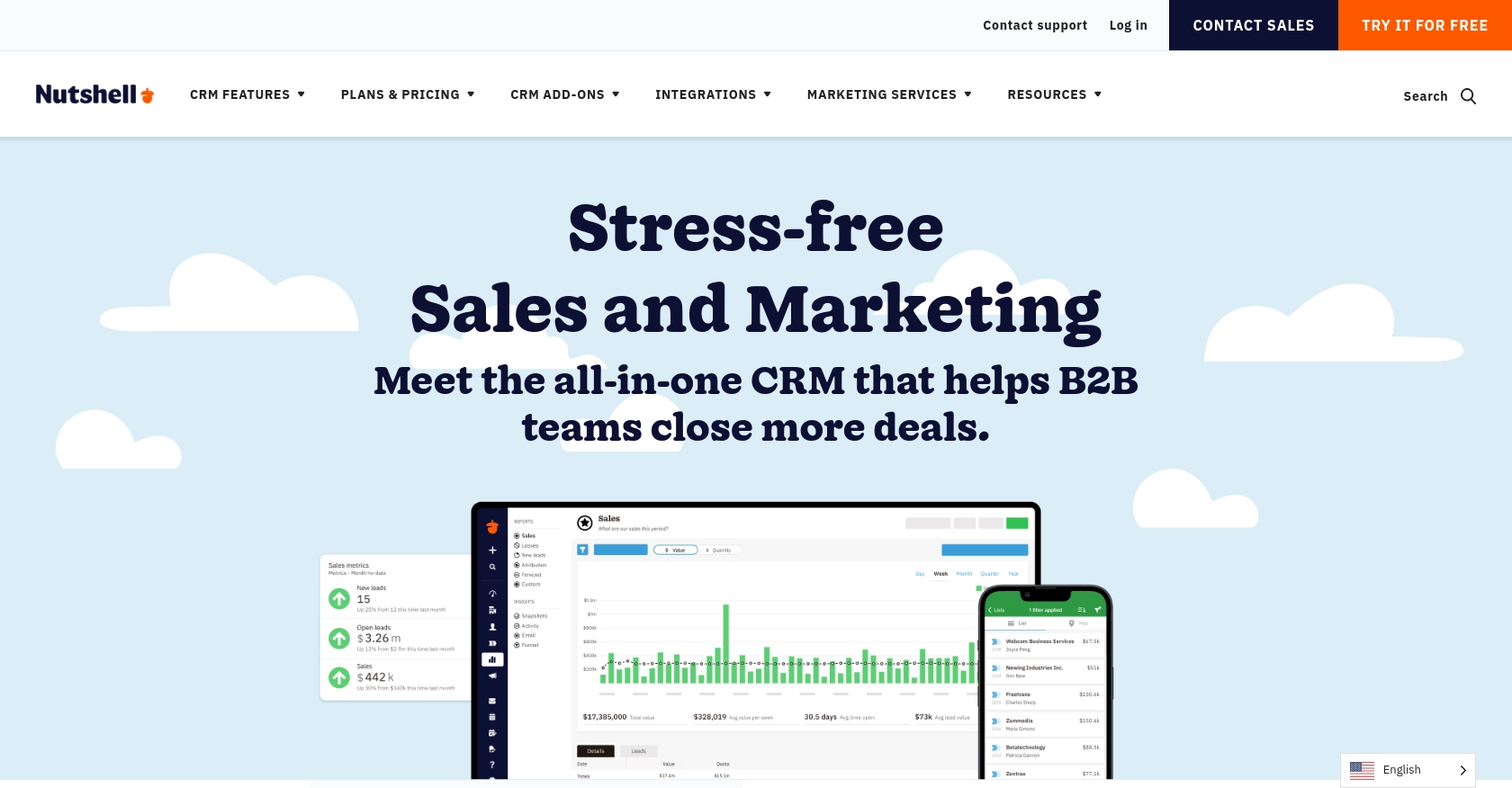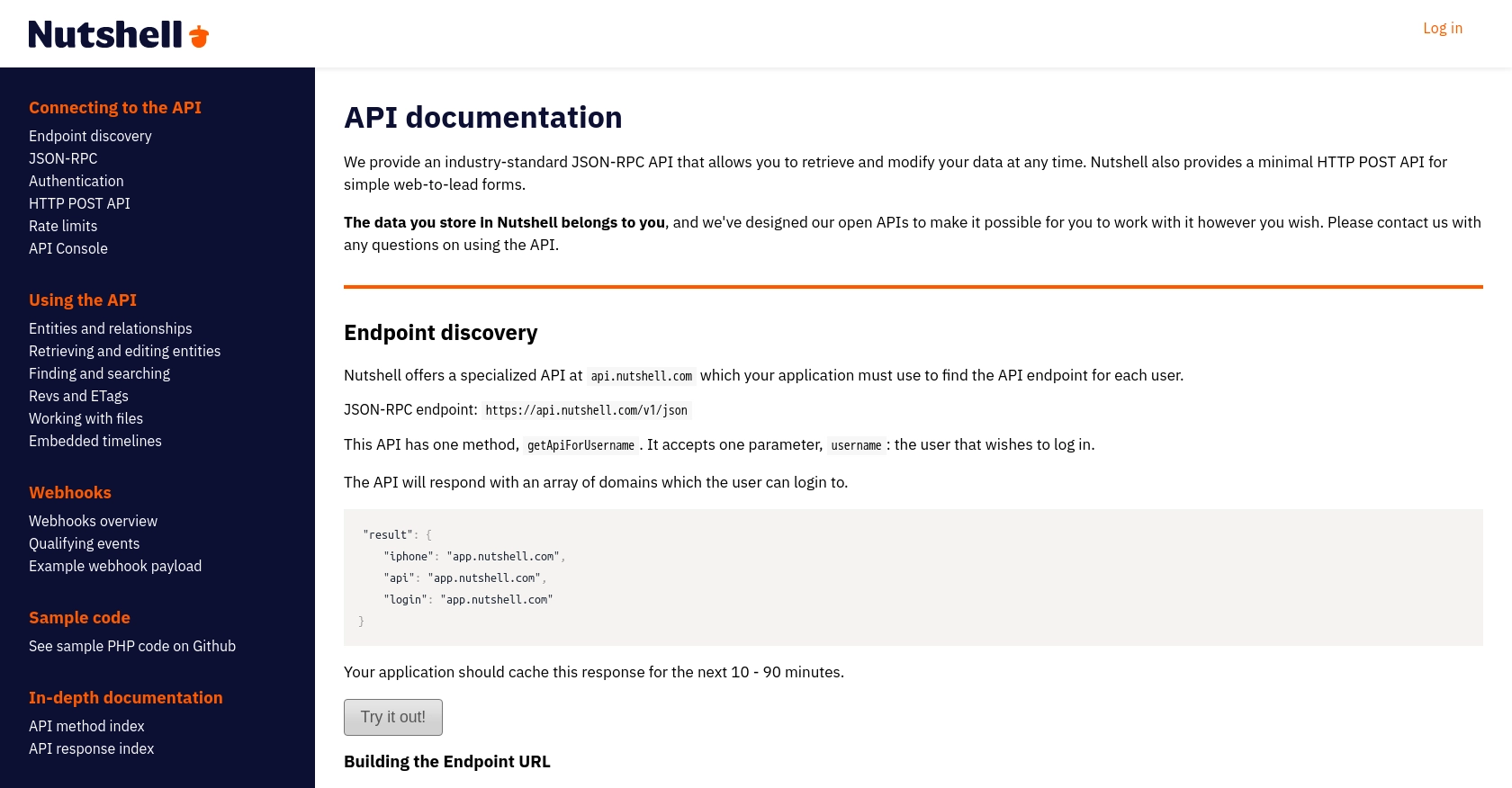Using the Nutshell API to Get Users (with Python examples)

Introduction to Nutshell CRM API
Nutshell is a powerful CRM platform designed to help businesses manage their sales processes efficiently. It offers a comprehensive suite of tools for tracking leads, managing contacts, and analyzing sales performance. With its user-friendly interface and robust features, Nutshell is a popular choice for businesses looking to streamline their customer relationship management.
Integrating with the Nutshell API allows developers to access and manipulate data within the platform, enabling automation and customization of CRM processes. For example, a developer might use the Nutshell API to retrieve user information and integrate it with other business systems, enhancing data consistency and operational efficiency.
This article will guide you through using Python to interact with the Nutshell API, specifically focusing on retrieving user data. By following this tutorial, you'll learn how to set up your environment, authenticate with the API, and execute API calls to manage user information effectively.
Setting Up a Nutshell Test Account for API Integration
Before you can start interacting with the Nutshell API, you need to set up a test account. This will allow you to safely experiment with API calls without affecting live data. Follow these steps to create and configure your Nutshell account for API access.
Create a Nutshell Account
If you don't already have a Nutshell account, visit the Nutshell website and sign up for a free trial. This will give you access to the platform's features and allow you to test API interactions.
- Go to the Nutshell website and click on "Sign Up".
- Fill in the required information, including your email and company details.
- Follow the instructions to complete the registration process.
Generate an API Key for Nutshell
To authenticate API requests, you'll need an API key. Here's how to generate one:
- Log in to your Nutshell account.
- Navigate to the "Settings" section from the main menu.
- Under "Integrations", find the "API" tab and click on it.
- Click on "Create API Key" and fill in the necessary details.
- Once created, copy the API key and store it securely. You'll need it for authentication in your API calls.
Understanding Nutshell API Authentication
The Nutshell API uses HTTP Basic authentication. You'll need to use your company's domain or a specific user's email address as the username, and the API key as the password. Ensure that all API calls are made over HTTPS to keep your credentials secure.
Configure API Access Permissions
Ensure that your API key has the necessary permissions to access user data. You can configure these settings in the API section of your Nutshell account:
- Check the permissions related to user data access.
- Enable any additional permissions required for your specific use case.
With your Nutshell account set up and your API key ready, you're now prepared to start making API calls to retrieve user data using Python. In the next section, we'll cover how to execute these calls effectively.

sbb-itb-96038d7
Executing API Calls to Retrieve User Data from Nutshell Using Python
To interact with the Nutshell API and retrieve user data, you'll need to set up your Python environment and execute the necessary API calls. This section will guide you through the process, ensuring you have the right tools and code to make successful requests.
Setting Up Your Python Environment for Nutshell API Integration
Before making any API calls, ensure your Python environment is ready. You'll need Python 3.x and the requests library to handle HTTP requests. Follow these steps to set up your environment:
- Ensure Python 3.x is installed on your machine. You can download it from the official Python website.
- Install the
requestslibrary by running the following command in your terminal:
pip install requestsMaking a Nutshell API Call to Retrieve Users
With your environment set up, you can now make API calls to retrieve user data from Nutshell. Here's a step-by-step guide to executing the call using Python:
import requests
from requests.auth import HTTPBasicAuth
# Define the API endpoint and authentication details
endpoint = "https://app.nutshell.com/api/v1/json"
username = "your_email@example.com" # Use your Nutshell email or domain
api_key = "your_api_key" # Use the API key you generated
# Set up the JSON-RPC payload for retrieving users
payload = {
"method": "findUsers",
"params": {},
"id": 1
}
# Make the API call
response = requests.post(endpoint, json=payload, auth=HTTPBasicAuth(username, api_key))
# Check if the request was successful
if response.status_code == 200:
users = response.json().get('result', [])
for user in users:
print(f"User ID: {user['id']}, Name: {user['name']}")
else:
print(f"Failed to retrieve users: {response.status_code} - {response.text}")
Replace your_email@example.com and your_api_key with your actual Nutshell email and API key. This code sets up a JSON-RPC request to the Nutshell API to retrieve a list of users. The response is parsed, and user details are printed to the console.
Verifying API Call Success and Handling Errors
After executing the API call, it's crucial to verify the success of the request and handle any potential errors:
- Check the HTTP status code. A status code of 200 indicates a successful request.
- Parse the JSON response to access user data. If the response contains an error, it will be indicated in the response text.
- Handle errors gracefully by checking the status code and printing error messages if the request fails.
By following these steps, you can effectively retrieve user data from Nutshell using Python. This integration allows you to automate and enhance your CRM processes, ensuring seamless data management across your business systems.

Best Practices for Using the Nutshell API in Python
When integrating with the Nutshell API, it's essential to follow best practices to ensure secure and efficient API interactions. Here are some recommendations:
- Securely Store Credentials: Always store your API keys and user credentials securely. Avoid hardcoding them in your source code. Consider using environment variables or a secure vault service.
- Handle Rate Limiting: Be mindful of the API's rate limits to avoid throttling. Implement exponential backoff strategies to handle rate limit responses gracefully.
- Data Transformation and Standardization: Ensure that data retrieved from the API is transformed and standardized according to your application's requirements. This will help maintain consistency across different systems.
Streamlining Integrations with Endgrate
While integrating with the Nutshell API can enhance your CRM processes, managing multiple integrations can be time-consuming and complex. Endgrate offers a solution by providing a unified API endpoint that connects to various platforms, including Nutshell.
With Endgrate, you can:
- Save Time and Resources: Outsource your integration needs to focus on your core product development.
- Build Once, Use Everywhere: Develop integrations for each use case once and apply them across different platforms.
- Enhance Customer Experience: Provide an intuitive and seamless integration experience for your users.
Explore how Endgrate can simplify your integration processes by visiting Endgrate's website.
Read More
Ready to get started?
